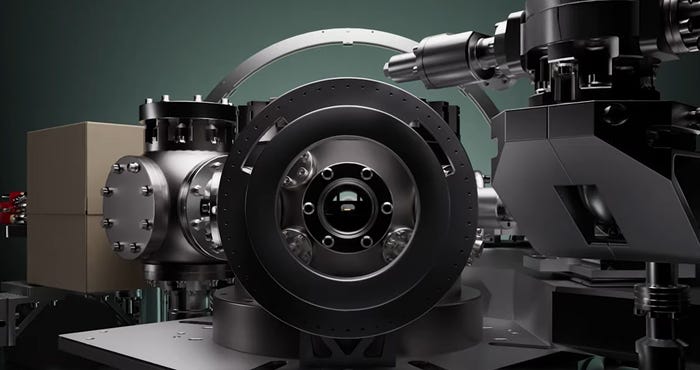
Connects decision-makers and solutions creators to what's next in quantum computing
World Quantum Day: Intel on Why Quantum MattersWorld Quantum Day: Intel on Why Quantum Matters
The journey from silicon transistors to full-stack quantum systems, the challenges of heat, error correction

To mark World Quantum Day on April 14, Intel director of quantum hardware Jim Clark gave an update via Twitter Spaces explaining why quantum is important and the company’s activities in quantum. Such is his enthusiasm for quantum, Clark has even named his German Shephard dog Qubit.
“When we think about everything in our universe, everything in nature, every molecule, every cell, these are based on the principles of quantum mechanics,” he said. “Richard Feynman was a Caltech physicist. He proposed in about 1980 that we could use quantum mechanics and the principles therein to do computation. In particular, we use two different principles, superposition and entanglement, to generate an exponentially larger number of states with which we can compute. A quantum computer of a certain size would be exponentially more powerful for certain algorithms than even the largest supercomputers on Earth.”
Intel has been making silicon transistors that follow Moore’s law – the observation that the number of transistors in an integrated circuit doubles about every two years– for more than 50 years. The company is now using its expertise in silicon transistor design to build a full-stack commercial quantum system based on silicon spin qubits.
“Our qubit is a little different than some of our competitors out there – our qubit looks a lot like a transistor,” said Clark. “Instead of having a current of electrons going through our transistor, we have a single electron. We operate our device at a fraction of a degree above absolute zero, colder than deep space. At those levels, we can access the quantum state of our electron and use it to do our computation, building on our success of Moore's Law to develop the compute technologies of the next 100 years.”
While Intel is entering the quantum processor market from a silicon transistor background, many of its competitors are startups developing novel qubit technology from quantum physics upwards. However, Clark believes that Intel maintains a competitive advantage.
“When we move up the stack a bit from a qubit chip, it's not enough just to control the qubits; we need an architecture on top of that,” he said. “A couple of months ago we released the Intel software development kit. This is a software environment that allows us to compile math algorithms to simulated hardware. This, when taken together with Horse Ridge (Intel’s control chip) and our qubit chip provides a full stack. Intel is making at Intel all the parts of the quantum computer. This is our competitive advantage.”
Clark admits that quantum computing still presents some challenges.
“Heat is not our friend,” he said. “We spend a lot of time with conventional transistors trying to reduce the heat and the power consumption. Any little bit of heat that comes out of our devices or Horse Ridge at low temperatures can be a problem. The cooling capacity at temperatures of 10 or 100 millikelvin is not that great. We're constantly up against the heating of our devices.
“At the same time, how do we efficiently increase the number of qubits? Right now the community is at the 10 to a few 100 qubits level. To get to a million cubits we need an efficient interconnect or wiring scheme to be able to control all those qubits. This was something that the semiconductor community and the transistor community dealt with in the late 60s. A scientist from IBM came up with Rent’s rule which talks about how the efficiency of our microprocessors was determined by the interconnects. And this is something we need to do across the entire quantum community wiring up qubits.”
Like many quantum experts, Clark believes the market is 10 to 15 years away from quantum computers that will significantly change lives, but enterprises need to start preparing now.
“At that time, we will have a computer that can solve problems that just can't be solved by any supercomputer on earth,” he said. “What we need to do today is start building the chips we need to start solving some of the problems that we expect to have using the software development kit that we have. That's going to teach people how to program, how to compile algorithms and how to schedule them to the qubits. It's not too early to start to be ready for when quantum computing will have an impact.”
To scale from today’s current noisy intermittent-scale quantum (NISQ) computers, Clark says that the quality of qubits needs to improve and quantum error correction introduced.
“This is where we take a group of noisy qubits, we run an algorithm on it to get what is effectively one, logical qubit or qubit without noise,” he explains. “This is probably five years away. We'll take a few thousand qubits, then, when we string these together, we can make a larger system. Error correction is the next biggest milestone for our community.”
About the Author
You May Also Like






